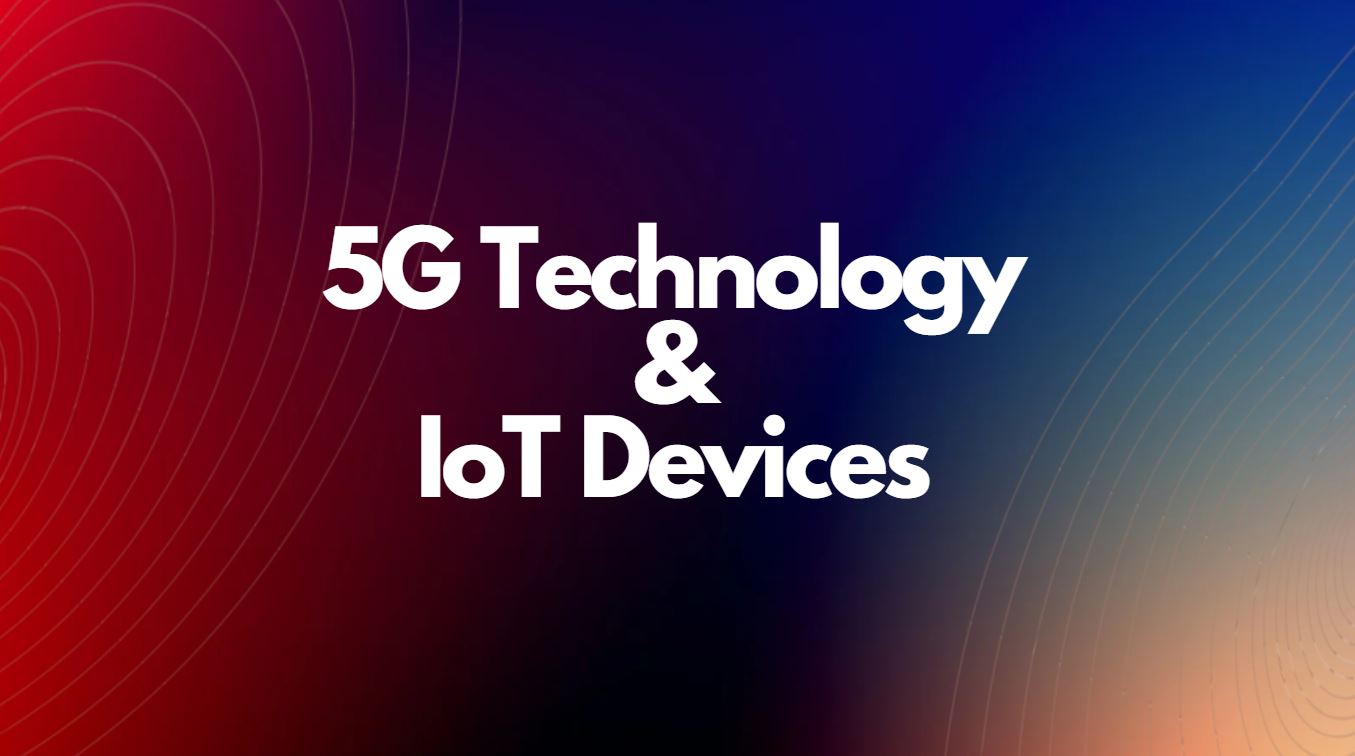- Likes
- Followers
- Followers
- Followers
- Subscribers
- Followers
- Members
- Followers
- Members
- Subscribers
- Subscribers
- Posts
- Comments
- Members
- Subscribe
The Impact of 5G Technology on IoT Devices

5th Generation mobile network technology or 5G technology has revolutionized the IoT devices on the basis of connectivity, data delivery, communication, and security. While it promises faster download speeds and lower latency for smartphones, the impact of 5G extends far beyond that. One area where its potential is particularly significant is in the realm of Internet of Things (IoT) devices. In this article, I’ll explore how 5G technology is reshaping the landscape of IoT devices and the implications it holds for various industries and everyday life.
1. Faster Data Transfer Speeds On IoT Devices
One of the most apparent advantages of 5G on IoT devices is its significantly faster data transfer speeds. This allows IoT devices to transmit and receive data in real-time with minimal delays. For industries like healthcare, manufacturing, and autonomous vehicles, where split-second decisions are crucial, this speed boost is a game-changer. Remote surgeries, instant machine-to-machine communication, and self-driving cars can all benefit from the near-instantaneous data transfer capabilities of 5G.
2. Lower Latency
Latency, the time it takes for data to travel from the source to the destination, is a critical factor for many IoT applications. 5G technology offers ultra-low latency, often in the range of 1 millisecond or less. This low latency is vital for applications like augmented reality (AR), virtual reality (VR), and remote control systems. With 5G, IoT devices can provide users with seamless and responsive experiences, whether it’s controlling smart home devices or operating machinery from afar.
3. Increased Density of IoT Devices
5G networks are designed to accommodate a significantly higher number of devices per square kilometer compared to previous generations. This is essential as the number of IoT devices continues to grow exponentially. Smart cities, for example, can deploy thousands of sensors and devices for traffic management, environmental monitoring, and public services without overloading the network.
4. Extended Battery Life
While 5G provides enhanced capabilities, it’s also designed to be more power-efficient. This means that IoT devices running on 5G networks can enjoy extended battery life, which is crucial for devices that may be deployed in remote or inaccessible locations. This improvement opens up new possibilities for long-lasting sensors in agriculture, environmental monitoring, and wildlife tracking.
5. Enhanced Security For IoT Devices
Security is a on top for IoT devices, as they often handle sensitive data. 5G networks come with advanced security features, including stronger encryption and authentication protocols. This added layer of security is particularly valuable for industries like healthcare, where patient data and medical devices must be protected from cyber threats.
Posts You May Like
6. Edge Computing Integration
5G technology enables edge computing to be seamlessly integrated into IoT ecosystems. Edge computing allows data processing to occur closer to the data source, reducing the need to transmit vast amounts of data to centralized cloud servers. This not only reduces latency but also enhances privacy and can be a game-changer for applications like autonomous vehicles and smart manufacturing.
7. Transforming Industries
The impact of 5G on IoT is already transforming various industries such as-
Healthcare: Remote patient monitoring and telemedicine can provide real-time health data to doctors and patients, enabling quicker diagnoses and timely interventions.
Manufacturing: Smart factories leverage 5G to enable real-time monitoring and control of machinery, leading to increased efficiency and reduced downtime.
Transportation: Autonomous vehicles rely on 5G’s low latency and high-speed connectivity for safe and efficient navigation.
Agriculture: Smart agriculture solutions use 5G for precision farming, enabling farmers to optimize resource usage and increase yields.
Smart Cities: Municipalities are deploying IoT sensors and devices to improve public services, traffic management, and environmental monitoring.
8. Enhanced User Experiences
From smart homes to wearable devices, the IoT products and tech enabled smart devices we use daily are becoming more responsive and efficient thanks to 5G. Users can expect improved experiences with faster and more reliable connections, whether it’s streaming 4K videos on smart TVs or interacting with voice-activated smart assistants.
In conclusion, 5G technology is ushering in a new era for IoT devices, with faster speeds, lower latency, and increased device density. This technological synergy is transforming industries, enhancing user experiences, and opening up new possibilities for innovation. As 5G networks continue to roll out globally, we can expect IoT to play an even more prominent role in our interconnected world.
Image credit- Canva


Comments are closed.